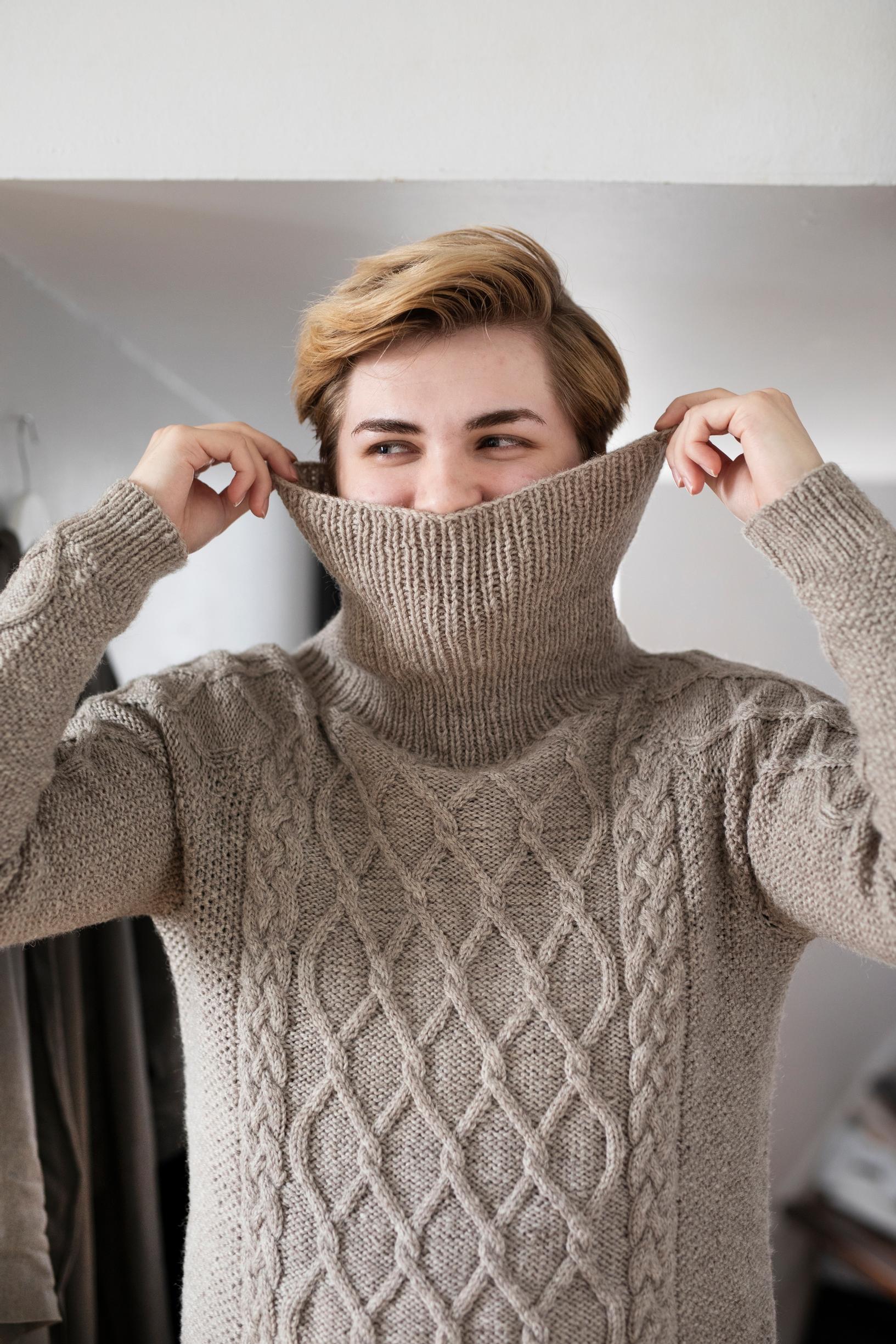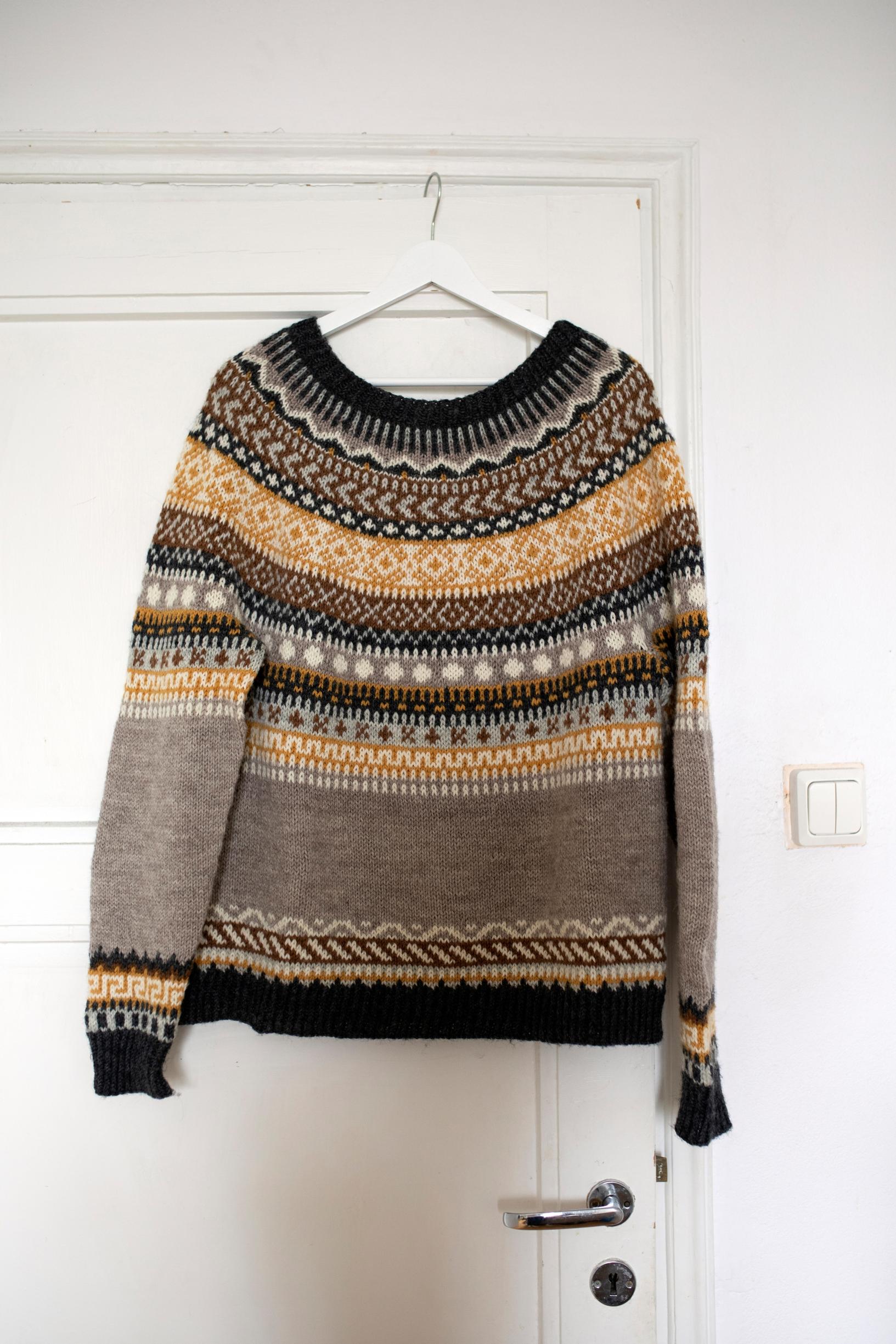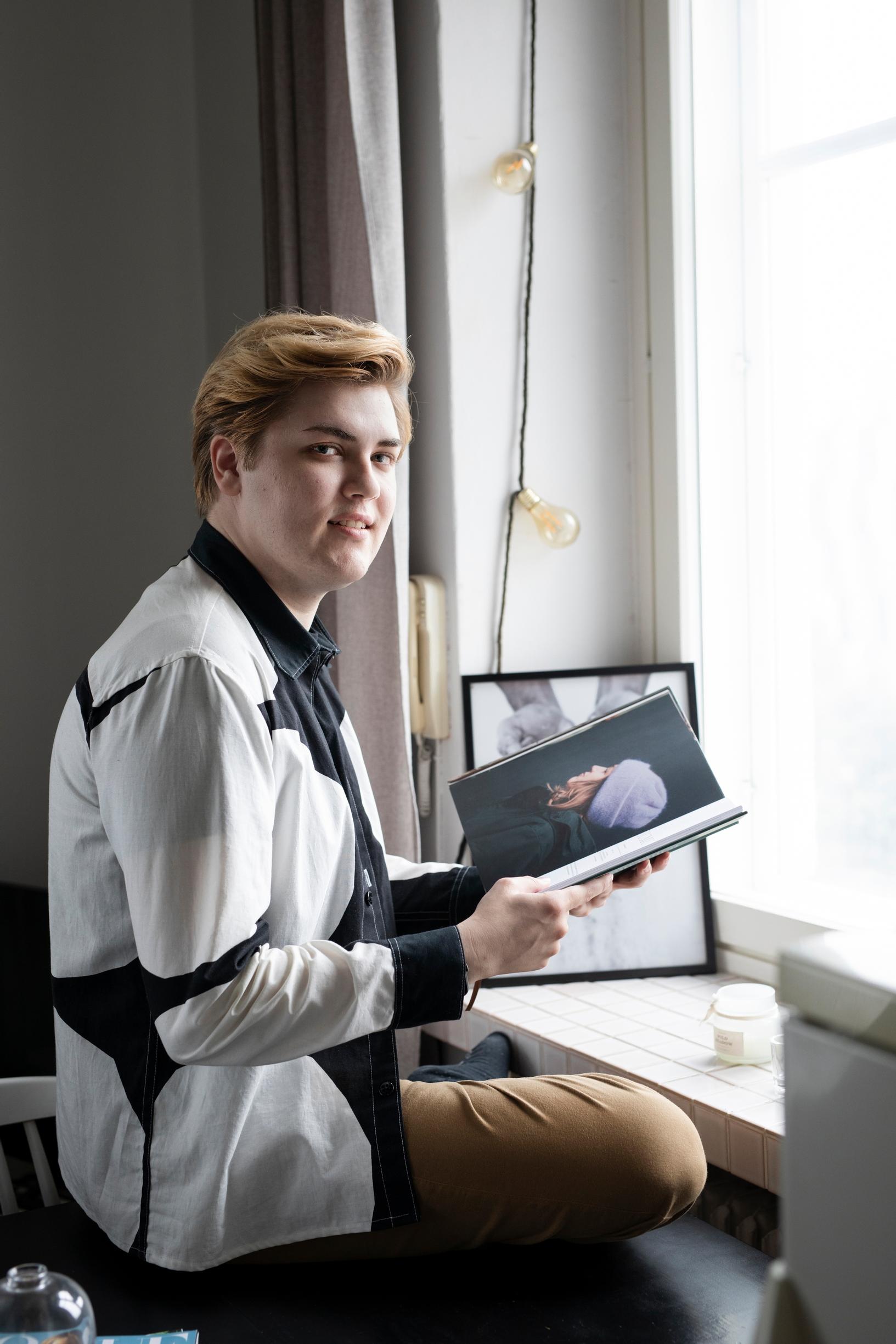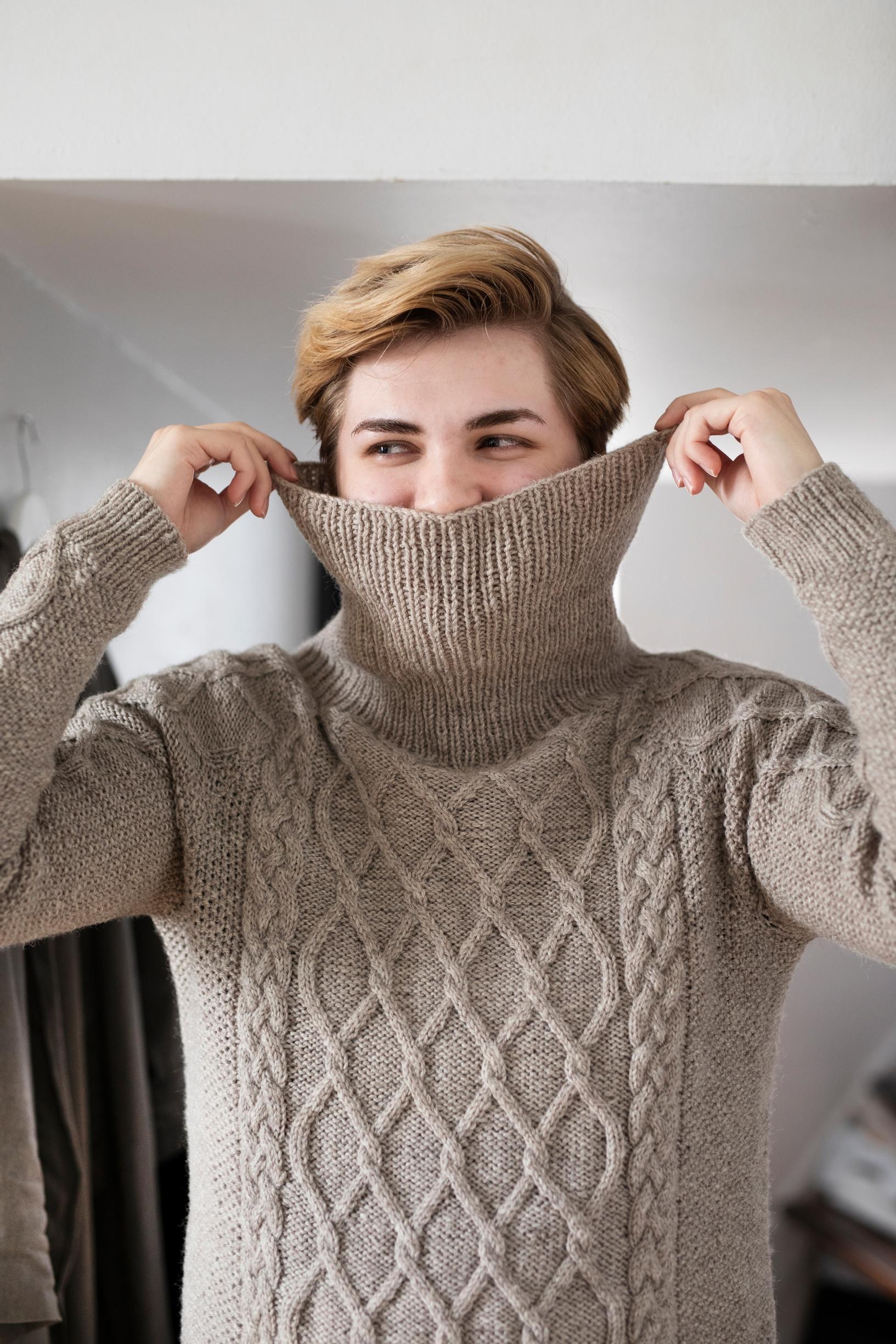
“I want my knits to look store-bought,” says knitwear designer Joona Höri
For knitwear designer Joona Höri, 22, learning to knit was a painful process at times. Nowadays, he prefers knitting less rather than more, because deadlines take the joy out of the hobby.
My first attempt to learn knitting was pretty painful. I was about eight years old when I asked my grandma to teach me. She’s right-handed, and I’m left-handed, so we tried to mirror the movements. I couldn’t figure out how the yarn moves and how to loop it on the needle. I managed to make some sort of patch, and that was that.
In 2019, I rediscovered my passion for knitting. I found knitting tutorials for left-handers on YouTube. That’s when I finally understood how it all works.
“I want my designs to have carefully considered proportions and details. Just like knitwear bought from a store.”
Nowadays, being left-handed doesn’t affect my knitting. Knitting patterns are virtually always written for right-handers. When I read them, I mentally convert them for a lefty. On the other hand, when I design my own patterns, I think directly how the work would progress for a right-handed person.
I’ve accepted that the knitting world is right-handed. In theory, I could create patterns for left-handers, but I don’t. About ten percent of people are left-handed. Only some of us knit, and I believe many do it with their right hand. I’ve thought that writing two sets of instructions would be too much effort compared to the benefit.
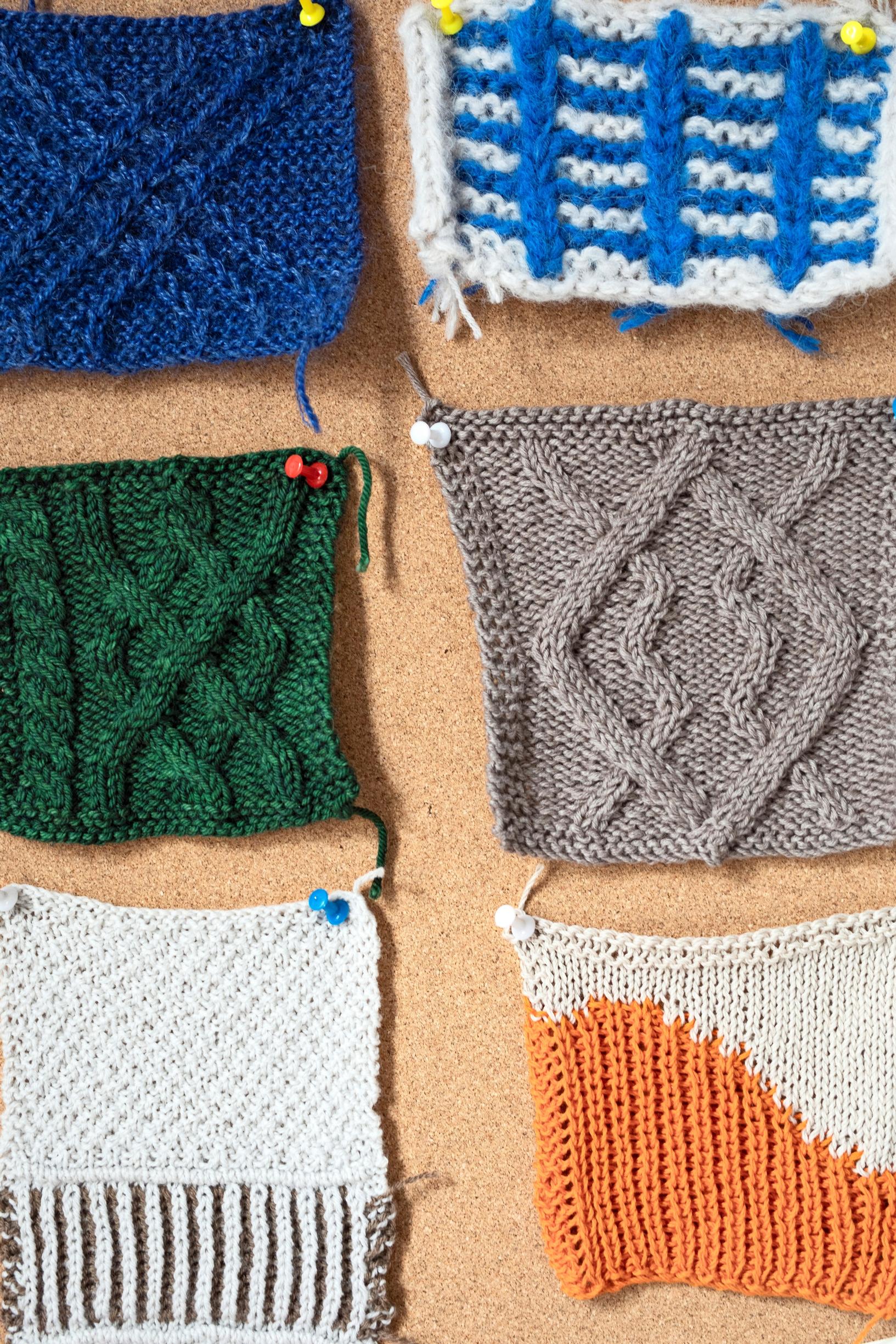
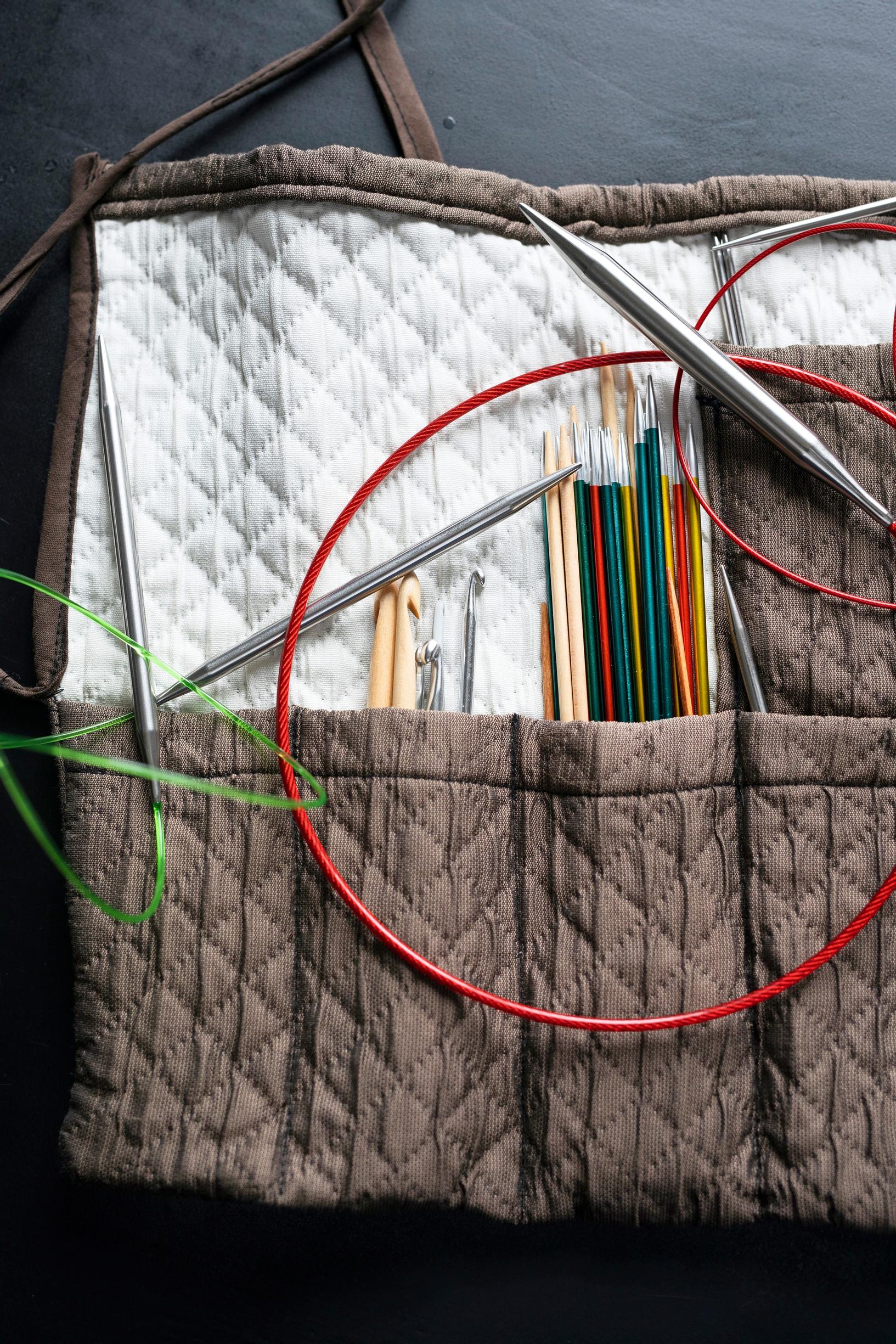
I have a knitting group of four people, and we meet in cafés. We order coffees, sit down, knit, and chat. I’ve needed this because I live alone and am a full-time student. Otherwise, there would be little rhythm in my daily life.
I really got into knitting in the spring of 2020. Before that, I had started many projects. I’d knit, get bored, and buy yarns for a new project. At my childhood home, there’s still an unfinished scarf somewhere that I started back then. I haven’t unraveled it because the yarn wasn’t particularly special.
“I have a knitting group, and we meet in cafés. We order coffees, sit down, knit, and chat.”
My enthusiasm grew when I finished my first sweater. I had jumped into the deep end with that project. The pattern had various types of cables. I had to learn a lot of new things, and it took over five months to knit. When I got the sweater finished and put it on, I wanted to start the next project right away.
I designed my first knit a year later. At that time, I was studying my second year of fashion design at Metropolia University of Applied Sciences in Helsinki. We had been covering the designing process there, and I reflected on that a lot when I decided to participate in a design competition organized by a yarn brand. I searched the internet for inspiration images, assembled a mood board, and visited a yarn store to explore yarns. I drew, colored, and thought about colorwork patterns.
I won that competition with my design. The win led to collaborations with yarn companies and craft magazines. I also design patterns that I sell on my Ravelry account.
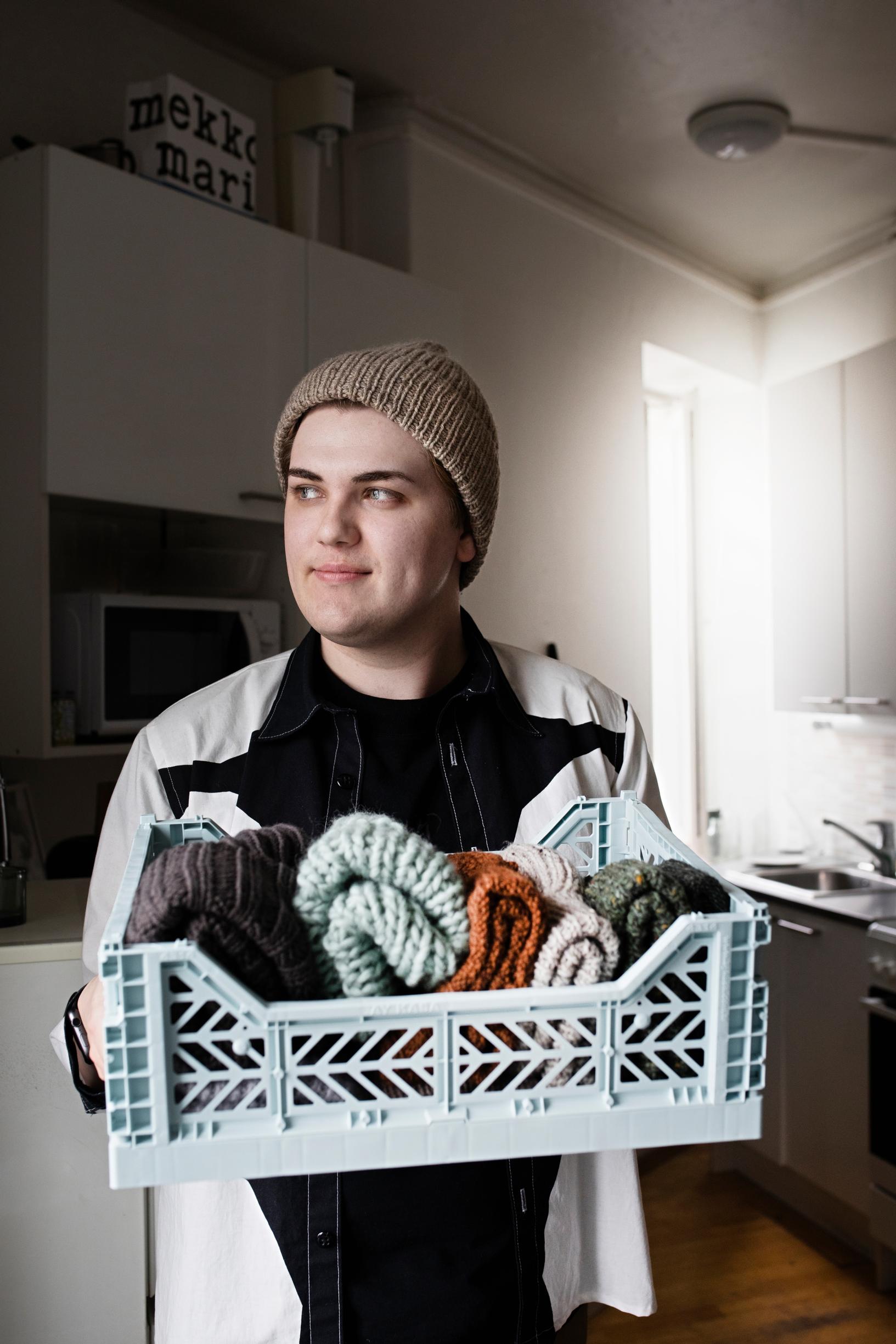
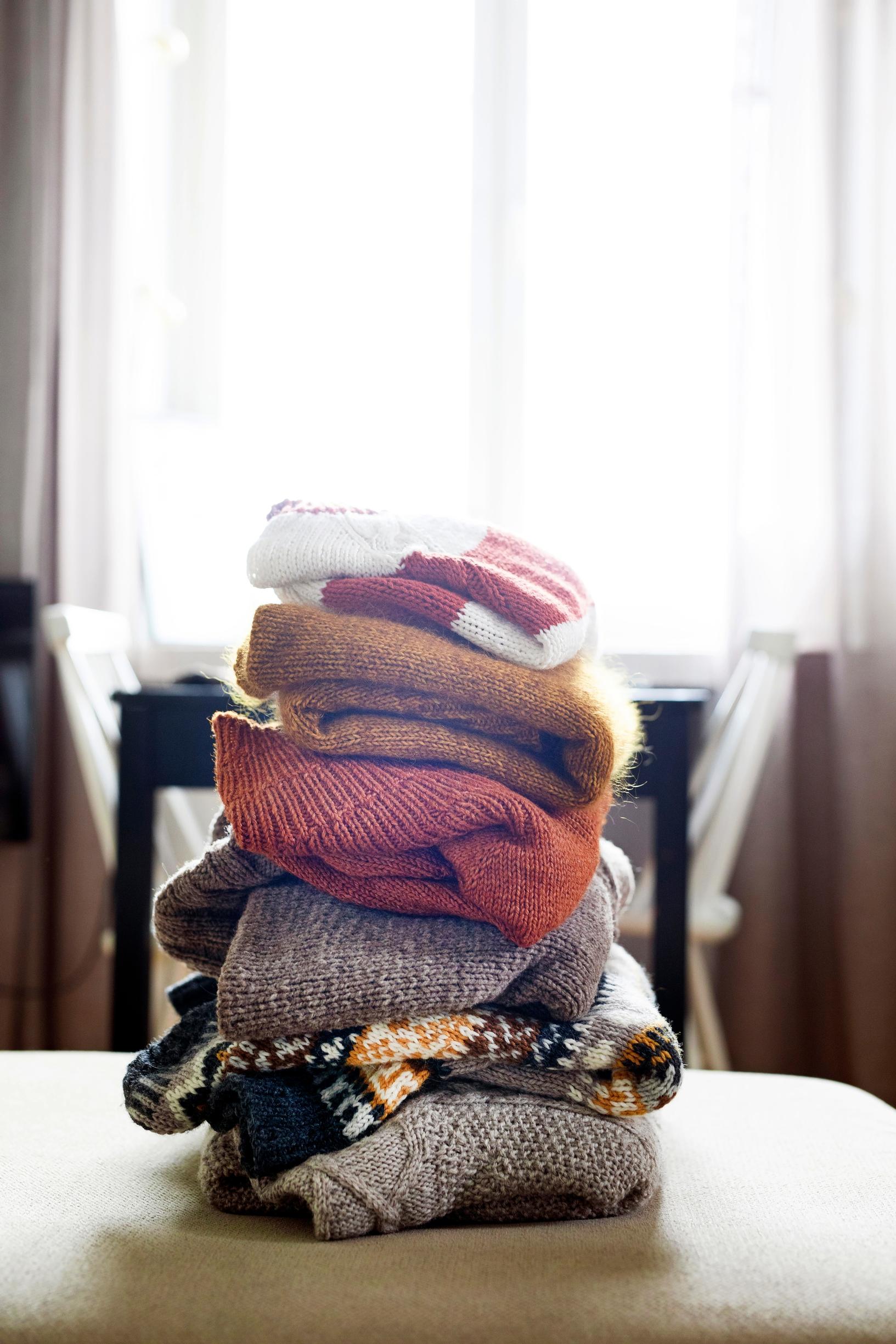
As a designer, my style is classic. I like neutral and earthy tones and prefer timeless and rather minimalist designs. I enjoy textured patterns like cables and colorwork. I want my designs to have carefully considered proportions and details, as well as a balanced structure. Just as if the knitwear were bought straight from a store.
My studies have been very beneficial in knitwear design. I understand garment structures, proportions, and grading—that is, adjusting the pattern for different sizes. There are standard measurement charts for that, but you also need to understand what kind of ease is needed in each case. Not all designers enjoy the math involved in grading. I myself like crunching the numbers; sometimes I can get into a flow state doing it.
I dream of working in the clothing industry. I want to continue knitwear design as a hobby. If I do collaborations with deadlines, my knitting easily becomes rushed. I want knitting to be relaxing and to take my mind off things. That’s why I’ve decided to do fewer and more carefully considered collaborations.
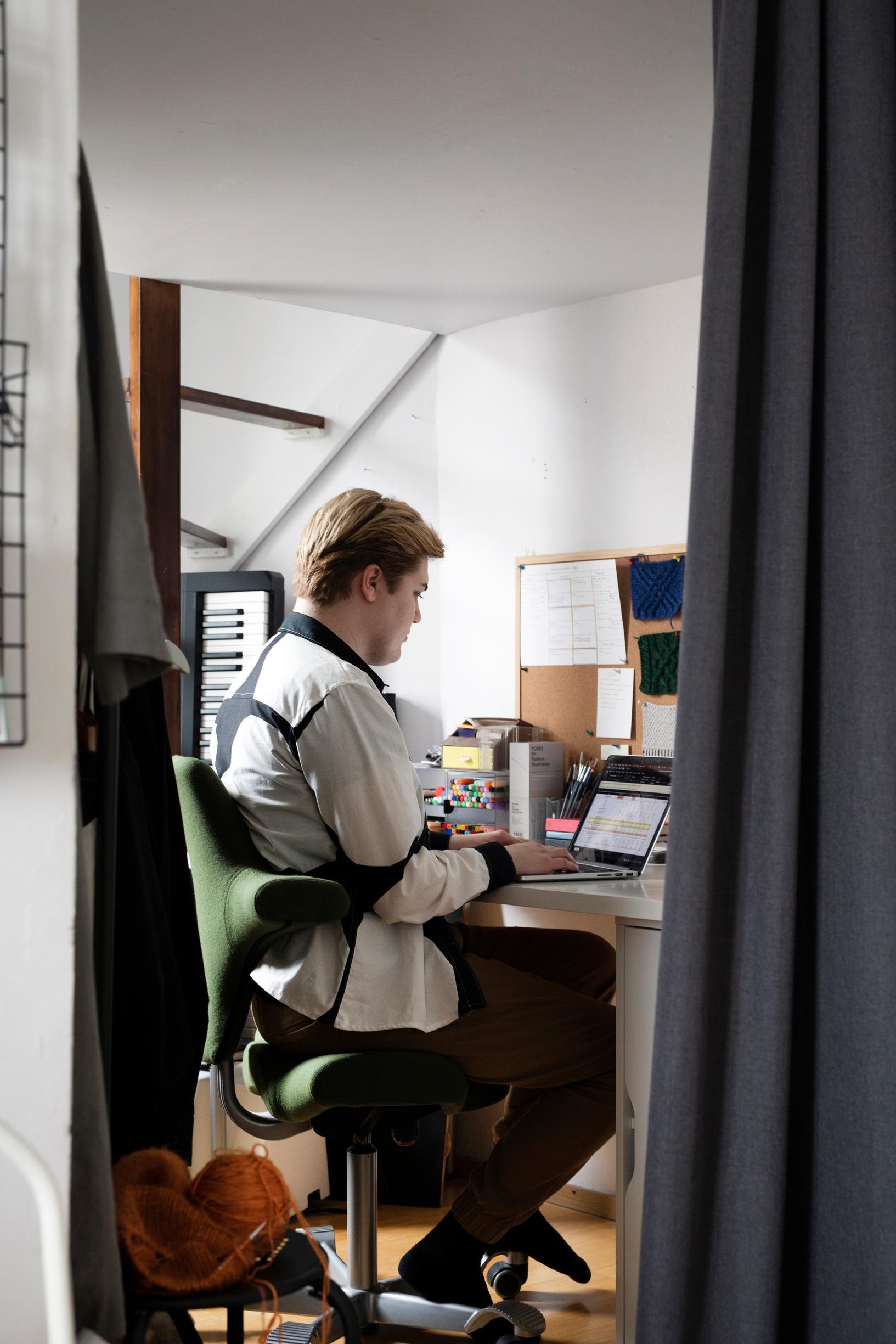
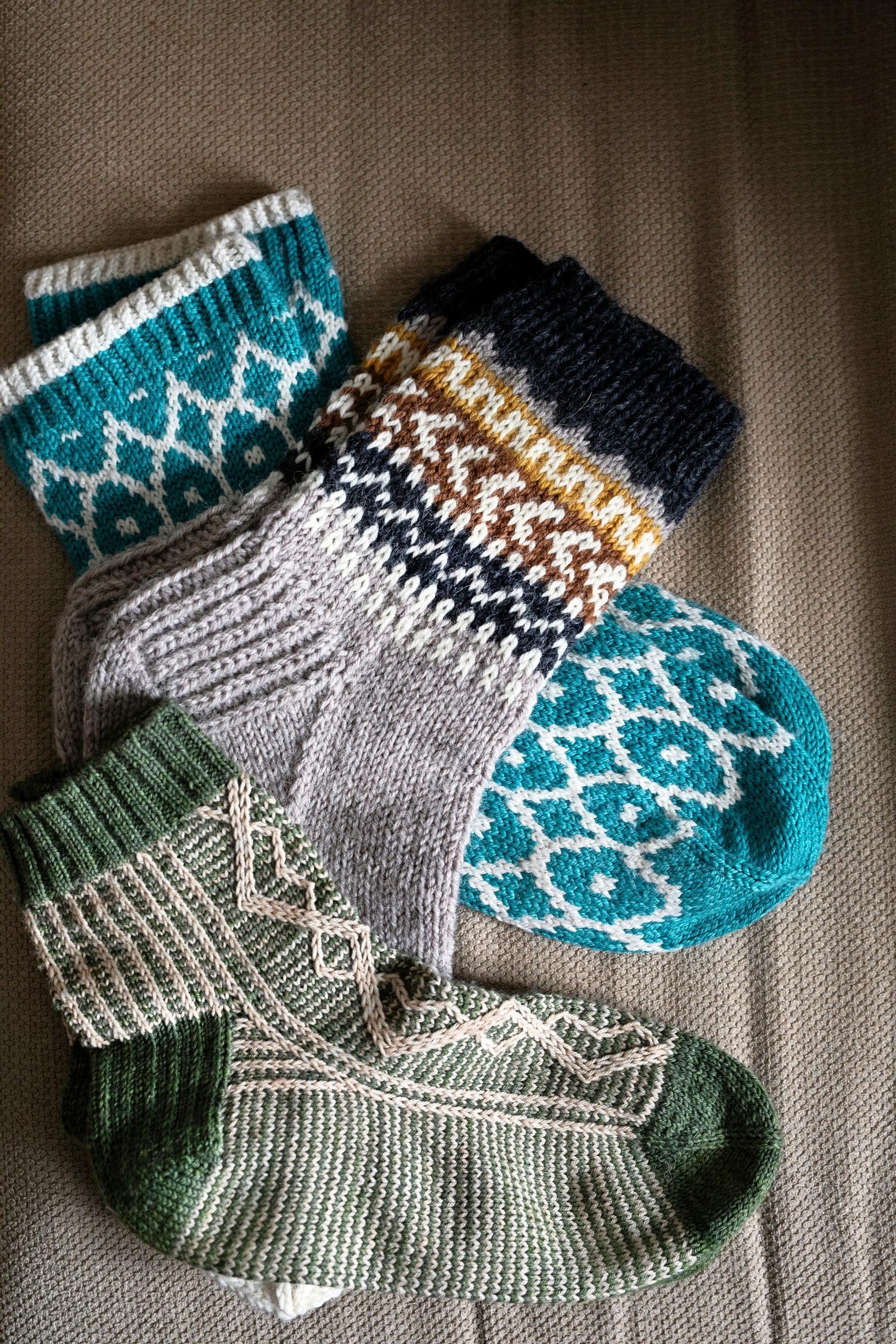
I mainly knit for myself. I can knit for others if someone asks me to. However, I want my work to be worn. Someone might say the knit is so nice they don’t dare use it. I think, come on, I’ve spent so many hours making it. If the work ends up unused, it will bother me.
I’ve never knitted anything for my grandma because she still knits herself. However, I’ve dyed yarns for her with acid dyes. My thought there has been that she can knit something nice for herself or others from them.
